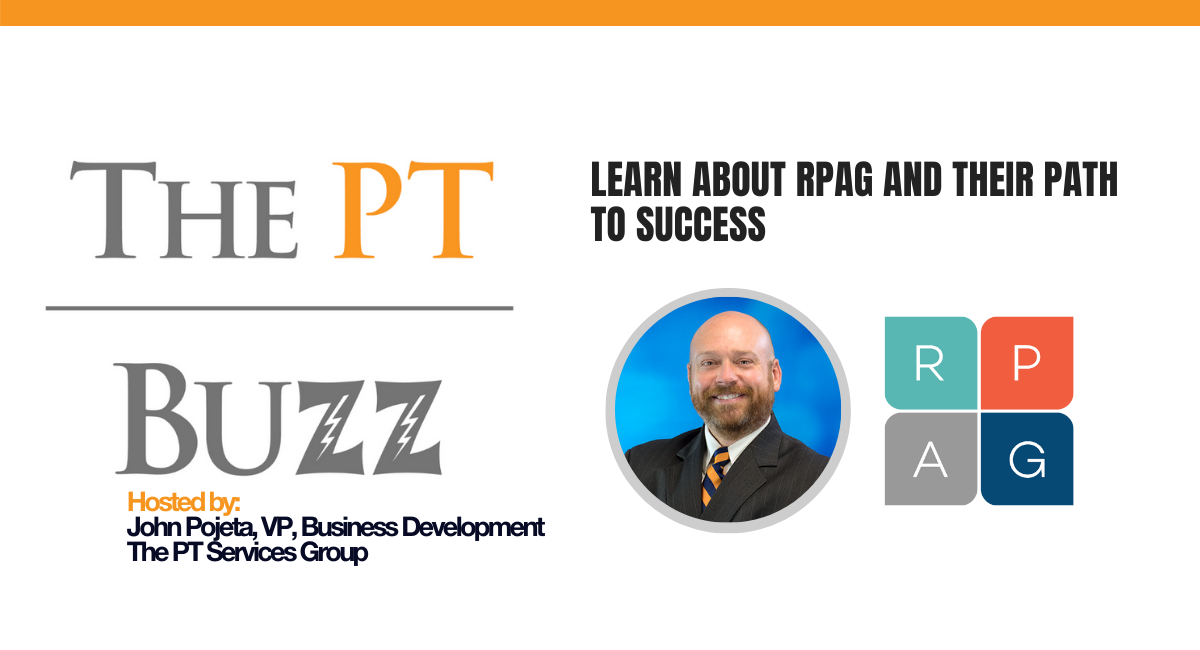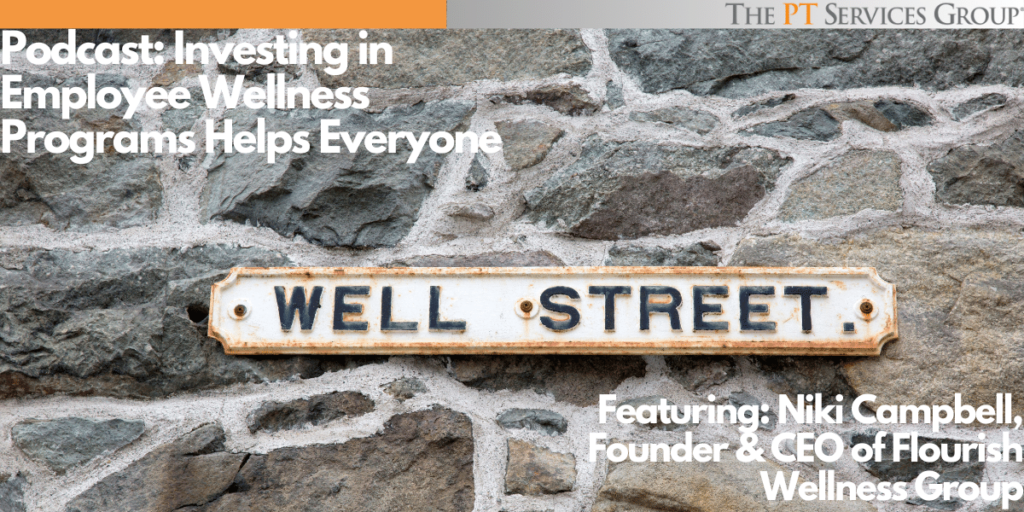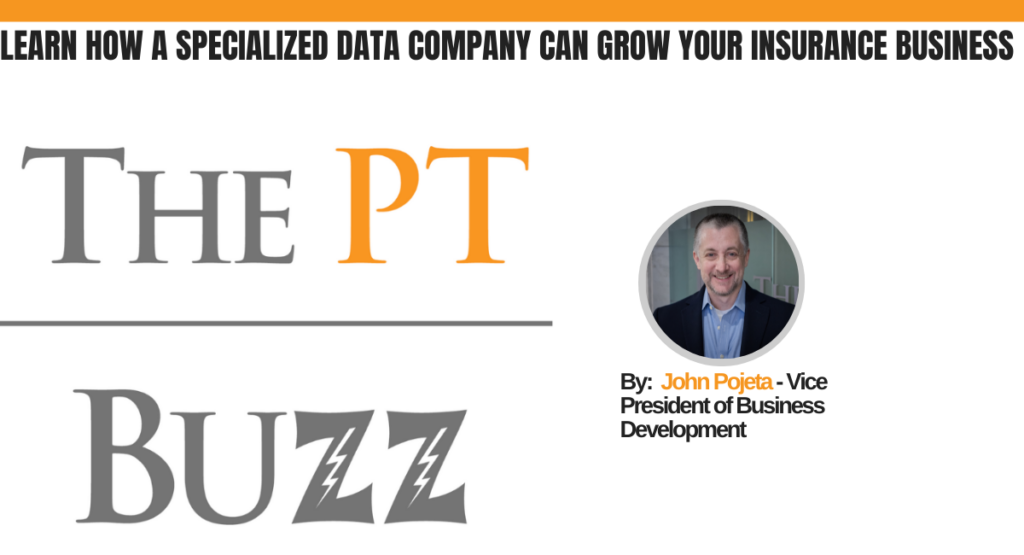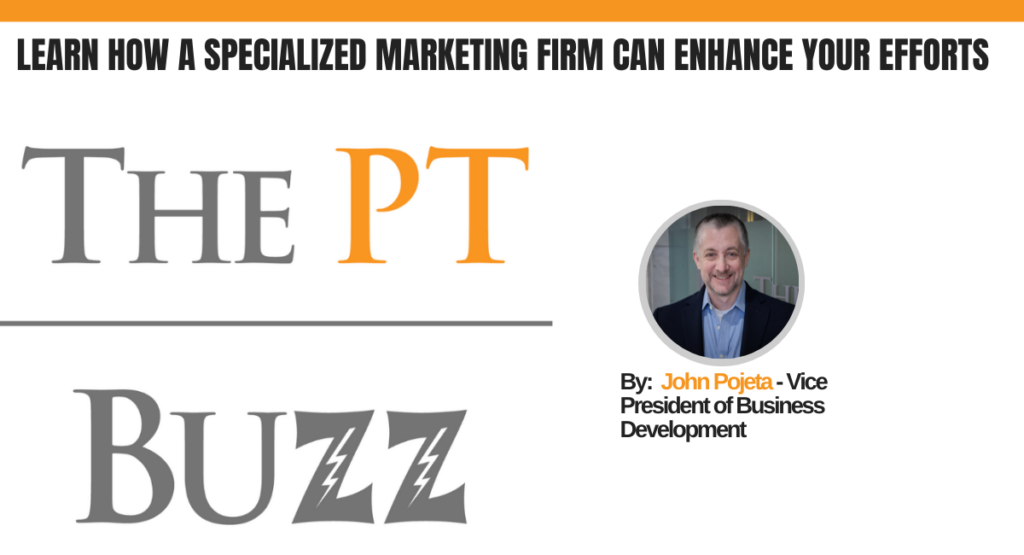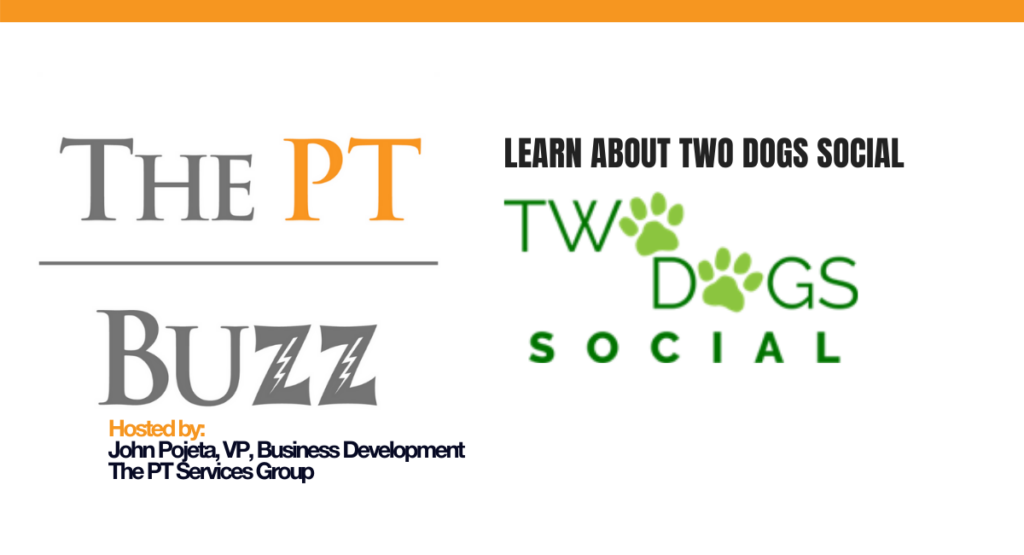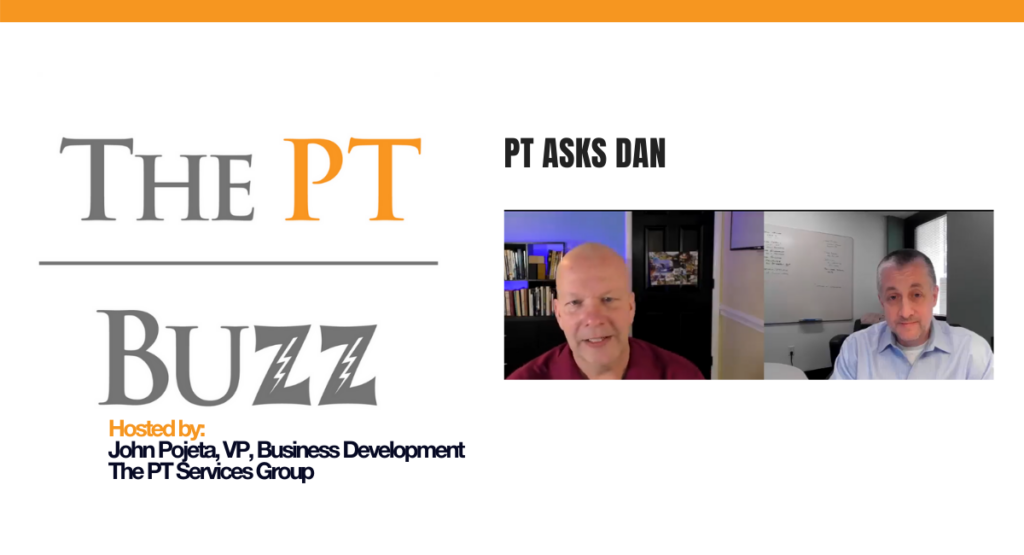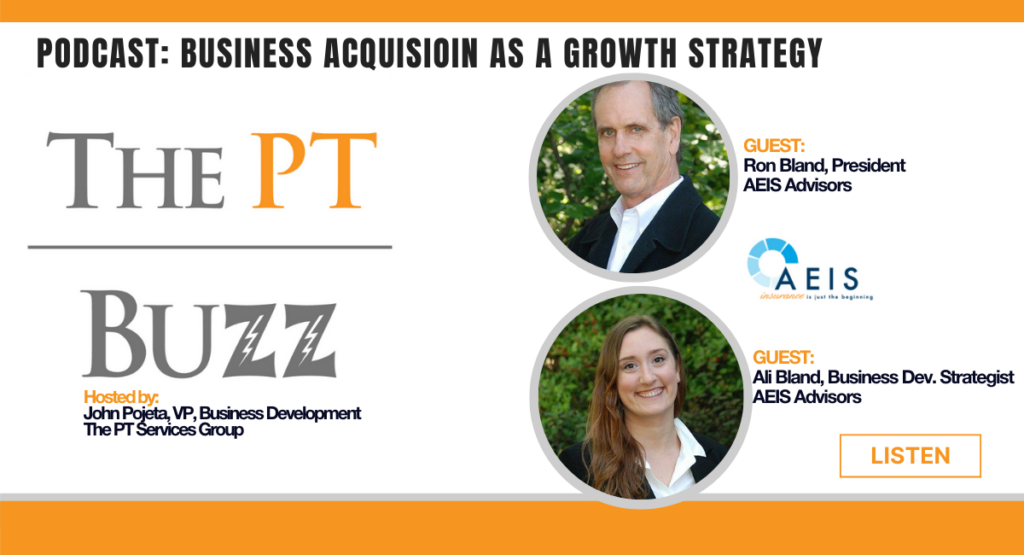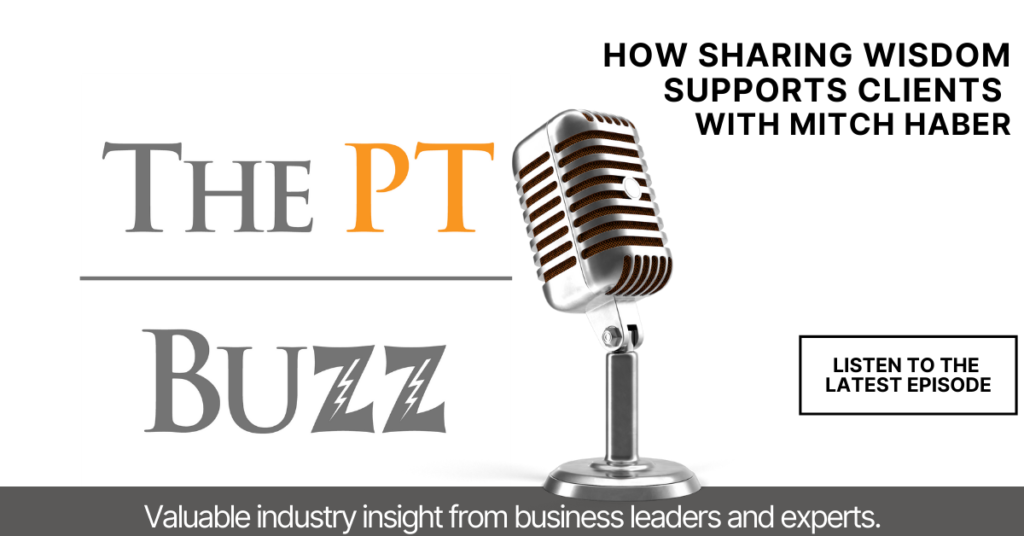Jeff Cheshier, Vice President, Retirement Services, Institutional Client and Member Relations for NFP joins John Pojeta, from PT, to discuss RPAG – Retirement Plan Advisory Group. They discuss RPAG’s mission of providing premier technology, training, solutions, and resources for retirement plan advisors and institutions who want to reach their highest potential.
Where to Listen/Subscribe














Podcast Resources:
Any and all resources we mentioned in the podcast can be found here. Looking for something not here? Contact us, we’d love to help you out.
RPAG – https://rpag.com/
NFP – https://www.nfp.com/
Guest Bio: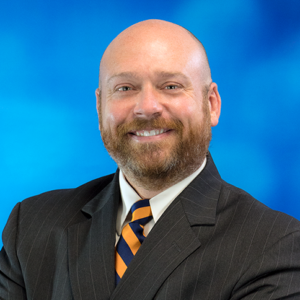
Jefferson D. Cheshier from NFP/RPAG serves as the Vice President, Institutional Client and Member Relations. Jeff joined NFP and RPAG in 2007 and has been in the financial services industry since 1998. In his current role, Jeff works directly with RPAG’s institutional clients and individual member firms to optimize their effectiveness, efficiency and profitability by offering practice management consultation, introducing and connecting interested parties, facilitating discussions with service provider partners and acting as an advisor advocate.
Jeff earned his BS and MBA from the University of Texas.
Podcast Transcript:
John Pojeta: Hi everyone, John Pojeta here from PT Services Group. Hope you’re really well today. And thank you for joining me for another episode of the PT Buzz. I talk about always having a special guest on, and we really do. What’s unique about today’s guest is he’s also been a dear friend of PT’s for, gosh, I’d say the last 15 years or so.
And Jeff is with RPAG and NFP. And our conversation today though really focuses in on RPAG. And we talk about the organization. We talk about the benefits they bring to the table for advisors. We talk about the type of advisor that typically engages with their services. Uh, we get a detailed conversation around change, not just.
Uh, the organization has seen in the industry has seen for the last 20, but things to think about really for the next two to 10 years and things that will be coming at you. So, and lastly, we talk about ways to engage in ways to consider utilizing their services. Not just if you’re not an existing member, but also for existing members and some of the new things that have come in in the last few years that maybe you haven’t heard about, and you want to have a conversation around.
So hope you enjoy the episode and thanks so much. Welcome Jeff, how are you?
Tap/Click to View Full Transcript
Jeff Cheshier: doing great, man. I appreciate you having me, John 50 has been a great business partner for my full 15 years here at the company. So, uh, we love working with you guys and, uh, and connecting our groups with, uh, with you all and a lot of good, good successful stories in the back.
Yeah. Yeah, no,
John Pojeta: it’s great stuff. So thanks for taking the time. And I guess to orient everybody, maybe some people who don’t know, can you give us a little bit of the background on our PAG, what you do, how you do it, and then your role with inside of our RPAG as well?
Jeff Cheshier: Absolutely. So. To start RPAG stands for retirement plan advisory group.
And you can think of RPG as a membership organization, uh, an affiliation program. Uh, the easiest analogy to make is it’s kind of like joining a country club. So once you join, you’ve got access to the tennis courts and the golf course and the dining room in the weight room. And you can use any of that, all of that, or just what works for you.
Uh, and we are all about trying to help advise. Build scale and scope into their practice, creating repeatable processes that help reduce the amount of time behind the curtain that is required to properly serve retirement clients. So you can increase the amount of time in front of the curtain, working with your prospects and your clients and doing the job of being a retirement advisor.
So we’ve got. 20 years’ worth of development of software to help gain those efficiencies as well as a practice management resources. Uh, we are partners with the absolute best service providers in the country, and they are all super eager to collect. With our members. Uh, we’re just whether you are a retirement firm that is dedicated to retirement and that’s all you do.
Or if you have a diversified practice in retirement as part of what you do, we want to, to help you have a better, more efficient and ultimately more profitable practice.
John Pojeta: So what’s your role inside of helping advisers and inside of RPAG?
Jeff Cheshier: Sure. Uh, so. What I spend most of my time doing is either working with our individual members or our institutional clients, as well as our service provider partners.
Uh, whether it is a sponsor, an individual advisor or a large group of advisors. My main charge is to help everybody who has a relationship with RPAG, get the absolute most out of that relationship as possible, whether that is identifying resources. You didn’t realize were there or things that you’ve just never had a chance to really dig in and find out how it can benefit your practice to be a lot of what I do is just connecting with what we do with PT services.
Just connect good people who don’t know each other, who by knowing each other can benefit each other.
John Pojeta: Yeah. And I, I certainly understand the scale and scope side. I think one of the things that has always been left, a big impression on me as we’ve engaged or been to conferences or different things, you, you brought out that network of providers and partners that you have, and just the cross section of resources and availability and options and choices.
Uh, it’s not just that. But it you’re selective. You’re very choosing who’s part of that. And I think it comes across in how they conduct themselves and interact with everybody else. It’s really good stuff.
Jeff Cheshier: Thank you. It’s a, it’s a lot of fun and I mentioned good people. Yeah. And there is, this industry is sometimes it feels big, but sometimes it feels really small, but there are so many good people in the retirement.
Services group retirement plan, uh, industry and business. And its a, it’s a great segment of the market to work in. And, uh, as you said, we, we try to be very selective. We don’t bring somebody on just because they want to write a check. Uh, we want to find out how they’re going to be a. Partner to our members and help them grow their business.
John Pojeta: Yeah. And a lot of times in any business, the part of the success model is who, you know, and how you get the option, interact with those people and be supportive. And so that’s, that’s a great example then. So I know Jeff is, as people come to PT and they sort of begin a, an evaluation process of who we are and what we do, that they really like to understand who else we work with.
And they’re basically saying to us, do I look like one of them or lots of them, or how do I kind of fit? Can you talk a little bit about the advisors that utilize the service and sort of the makeup of their world?
Jeff Cheshier: Absolutely. Well, so from the highest perspective, we are a very diverse group of, uh, folks and affiliation.
We have very large practices that have 30, 40 members of their team. We have one and two person operations. We have members who are only broker dealer affiliated. We have folks that are both broker dealer, as well as RIA. We also have people who are only RIA. Um, we w the, the one thing that unifies everybody is a desire to grow their book of business and their practice and gain efficiencies and profitability.
And so, uh, when I first started within RPAG, uh, 15 years ago, I was charged with selling RPAG, onboarding new members and providing ongoing service. So I was kind of a one-stop shop. And during the sales process, the question that I was asked most often is what, what point of, of my books growth.
Should I. Engage with the RPAG. And the answer is it’s not where your book is. It’s where you want it to go. So you could have a practice that has 30 plans and RPAG might not be a fit. If your model you’re happy, where you are, you have the lifestyle that you’re looking for. You’re not really looking for growth.
Everything’s cool. You might not need RPAG, but. Four plans or 400 plans. If you’re looking to grow RPGs here to help you do exactly that. Hmm.
John Pojeta: So even if you’ve got somebody that maybe they’ve built a consumer book of business over the years, but they’d like to start getting into the qualified plan side, there’s a lot of value in your services to help them out of the gate.
They don’t just need to come to you with, Hey, I’ve already got this book of business now help me take it to the next.
Jeff Cheshier: Absolutely RPAG originally was built to help smaller books of business advisers who didn’t have weren’t able to afford. The development of their own resources to be able to compete with very large practices to bat above their, their average per se.
And so that’s the, that’s one of the threads that has gone throughout. So not only is it about building those repeatable processes, but it’s about bringing the heft of technology and development to the, uh, to the. to execute of a smaller firm. That again, doesn’t have the ability to, uh, to have a full technology group and to, to develop all those resources internally to where you can compete effectively against the big consulting firms.
And we have a ton of members who have been doing exactly that for 15, 20 years using the RPAG resources. Sure,
John Pojeta: sure. And that really speaks to where you started the conversation about. And helping in that, in that Ernest. So, okay. So thinking back, obviously we, we deal with a lot of changes. My wife and I were talking the last couple of days and our, our, our youngest child, we have four, our youngest just turned 20.
Oh, wow. So there’s, yeah, there’s a whole minute everybody’s getting out and it’s just her and I, and you know, the joke is always we’re, we’re figuring out now if we really like each other, cause everything is. And the kids there’s so much that, but, you know, change has changed and it’s tough and we deal with a lot of it and we’ve seen a lot of it in the industry.
And it’s only going to keep calming. When you think about the next couple, three years, what are some of the changes you really see and talk a little bit about RPG and how they’re positioned to help advisors manage that? Not just the actual change, but really also the emotional aspect of the
Jeff Cheshier: change.
Absolutely. One of the changes that has been it’s already underway. And it has been for a number of years now, is the move away from broker dealers, uh, to either being part of an exclusive RIA or even starting, uh, someone’s own RIA. And that I think is not slowing down anytime soon. Uh, there is also the trend of the big consulting groups moving downmarket.
They’re no longer have a. Of say a hundred-million-dollar plan. They’re much more likely to engage on a $50 million plan or a $20 million plan. Uh, so that’s, you know, you’ve got the big kind of coming in on what you can call the smalls territory. Well, on the other end of that spectrum and, uh, uh, credit to my friend, Jeff Atchison, who a lot of folks in the industry know the smalls in order to survive.
They absolutely can survive this change, but they’ve got to affiliate with the bigs and leverage the resources of the bigs. And that’s one of the things that RPAG is uniquely positioned to do is to be that resource to where the, uh, the smaller groups can not only compete against the larger groups as they’re coming into the smaller.
Historical territory, but they’re able to get up and go to bat on those larger plans. Now, a caveat that I like to throw in there is every now and then I’ll get a call from somebody and say, Hey, I just got an in at this hundred million dollar plan that I can, I’m going to be able to, they’re going to get me into, to bid on this plan.
I need some advice. And my response to that is usually that’s awesome. Congratulations. Go get them. But no matter the strength of your relationship that is getting you in the door at some point in that evaluation process, that somebody at that company is going to. What other horses do you have in the barn that looked like us back to one of your original questions.
And if you don’t have a real good answer for that, you’re going to be in a world of hurt and your odds of being able to win that piece of business have gone down into single digits, maybe. Uh, and so one of the resources. Our members have gotten a lot of value out of in the last probably 10, 15 years is that if someone comes across one of those big opportunities like that, but they don’t have any plans that are like, that are in the same ballpark.
We can partner with the RPAG member to help either close the. For the member to then surface moving forward or we can, uh, step in and serve, uh, help serve that, that plan. And there is a split. And as soon as someone hears the word split, they start trying to split for the door. But my retort on that is, you know, part of something is better than all of nothing.
And there has been a number of groups that we have helped close those larger plans, but. The beautiful thing is they get to attach their name to that plant. And so the next time they come across a larger opportunity, they’re able to point to someone that they have in the door that they’re providing a great experience to, and they can begin to move in to not having to split that.
And that’s, that’s one of the best ways to move up market. That’s a common question. How do I move up market? Well, you find somebody to partner with.
John Pojeta: Yeah, they have, then they have that horse in the barn as you described, and then off they go and, and we get a lot of that too is, Hey, I’ve got 30 plans. They average maybe a couple million in size, but I really liked to work with plans of 10 million
Jeff Cheshier: plus.
Sure. Well, and that’s another great point, John, a lot of folks focus on how to move up market. Thinking that’s going to be the pathway to profitability, but a lot of times those larger plans, they are not, the margins are pretty slim on our ship. And that’s another thing that RPAG can really help you do is, uh, to make those smaller plans more profitable.
Because if you are able to get those repeatable processes, reduce the amount of time that you have to spend servicing behind the scenes with those clients and just get that. There’s there’s gold in those Hills. That’s right.
John Pojeta: Well, and those smaller plans are certainly more nimble when it comes to change.
You get into bigger plans and he hadn’t committees and the sales cycles, and you could spend three years and not gain any traction ultimately. And. Absolutely. Talk a little bit more about the move to the RIA side for a moment. So we, we see what, what you see and we see some still just in a BD cam, some at a hybrid level, some fully transitioned and out the door to the RIA side.
Um, one of the interesting things we see is a lot of people having. Uh, almost like monkey bars, having a hard time letting go of that BD side, because it’s all they’ve known maybe for 25 or 30 years. Right. Are there, are there ways you help in that transition or ways that, that RPAG comes to the table to help, um, make the, the fee element versus the commission element easy or, or coaching with that, that sort of thing.
Jeff Cheshier: As with a lot of areas in life, uh, the BD to RIA comparison has a lot of the grass is greener on the other side components. But when someone is a member of a BD, you know, all the, the, as soon as the name of the BD comes up, all they think about is their run-ins with compliance or what their haircut is and how they think it should be lower.
And your. To your monkey bar analysis, you, uh, get a good swing and you let go of the ones you’ve got and grabbed onto the other one. And they have their own unit, a unique sets of circumstances and challenges that a lot of things that the broker dealers do that goes unnoticed or unappreciated, all of a sudden is laid bare.
Uh, and we’ve got a number of broker dealer clients, and we love them. Uh, Some things to be said, advantages to be gained in that RIA space. Uh, there is a ton of flexibility, but there’s also a ton of responsibility. And a lot of that has to do on the compliance side because you no longer have a compliance department, uh, or an entire team that that is their world that they live in.
And so when a Risa question. Challenges requirements come up. We do have a, uh, full Arista team of, uh, Ursa attorneys and we are happy to help field questions. Now be very careful. We are not providing legal advice and we will refer you and suggest that you do that. But we’ve got a deep bank of Arista knowledge that we’re happy to, uh, to share whether it’s at the plan level or.
You know, w whatever angle that is coming out. Yeah.
John Pojeta: It is the hybrid role, a bit of a sweet spot right now, then
Jeff Cheshier: it is because it allows you that flexibility, depending on the situation, you know, the fiduciaries charge, according to ERISA is to act in the best interest of the participants. And so that means that your one size fits all solutions are typically going to be a little frowned upon because.
One size never fits all. And so that moves to the plan space too, in some situations, uh, a fee, a flat fee, uh, an asset-based fee that is good. They sometimes the client wants you to be a 3 21 fiduciary. Sometimes the client wants you to be a 3 38 fiduciary to the plan. And of course that’s only going to be able to have be done in the, uh, uh, RIA environment, but there are times.
Commission and the broker dealer world makes all the sense in the world. And so the dual affiliations, uh, that they provide so much flexibility and you’ve got the, the shield and cover of a broker dealer and the compliance team, if, and when you need it. Gotcha.
John Pojeta: So I know when I, I started in the business in 93, Hm, and see that I’m quite like.
Um, so one of the big things then on building a consumer practice was the advent of, Hey, when somebody retires somebody transitions from one job to another, the, the role oversight of things. We still get calls today asking us if we generate rollover appointments or leads in those kinds of opportunities.
And one of the things that really keep screaming at me to your point back to Jeff Anderson was a conversation. He and I had about the fiduciary aspect at not just the plan level, but the participant level, the advent of SDBA is a push to keep money in the plan fee wise, structure wise and all those good things.
Can you talk a little bit about that? Sort of, I guess that industry shift in some of the things advisors need to think about, um, if they’re not in the qualified plan space, maybe they should be, or other ways you support them in that changing arena.
Jeff Cheshier: Yeah. And that not to sound like a broken record, but that was a one size fits all solution.
There we go. Yep. Leaving a, uh, an employer, whether you’re onto the next job or retiring, you’ve got to get that money rolled out into an IRA so we can control it. That’s no longer the case. And to your point, there are options on the, uh, within the plan that really allow you to get out of just, hopefully not more than 10 to 12 investment alternatives that are available when the P with the plan to get into that self-directed and you can really tune that to your needs, uh, whether you are 25, 45 or 65, uh, And now we’re into the brave new world of maybe having crypto in there, depending on who your, uh, your client is.
So again, I, the theme I keep coming back to is flexibility, and the ability to customize to somebody’s needs. So for. Some former participant or former employees, it may make sense to stay in that plan, whether it’s for cost reasons, uh, had there’s there’s a reasons that you can stay in the plan, but. If it makes sense for them to get out and get in, roll into an IRA, they’ve got the ability to do that.
And so the, the strings that are attached and the downsides have been reduced. So that really allows that advisor to get in with that participant and demonstrate their value of getting to know that participant what their situation is, what their needs are. And then after we have all those inputs, then we can go about saying, we think this is probably the best path forward for you.
And. Yep.
John Pojeta: So options and choice and all that good stuff. And it’s only going to
Jeff Cheshier: continue to expand with the, uh, the advent and all the, the appetite around, uh, implant distribution options that are coming. Yes.
John Pojeta: Yeah. So w one of the things is we speak with our RPAG members who come on board and use our services.
We build a storyboard with them. So what’s the story you tell and how do you position and how do you try and differentiate yourself and all those kinds of things. One of the variables that always comes onto the table is participant outcomes, participant education, those types of things. And it comes back to our PAG and Wells sense frequently, without a doubt, it always comes up.
So can you talk a little bit about, well sense what it does and how advisors
Jeff Cheshier: utilize it? Absolutely. Um, well, and. The storyboard that you mentioned. That’s one of the things that I love about referring our RPG members to PT is because you spend so much time on the front end with someone, helping them to understand what to expect, how the relationship can evolve and benefit them, but the things that they need to do in order to get the most out of that relationship.
And it’s awesome because because RPAG and PT have such a, a long shared history. In a lot of ways we can almost finish each other’s sentences. And so know the RPG story, you know, the resources that RPAG members have access to and the types of things that they typically do for their clients. So that that’s an efficiency gained in and of itself.
Uh, no RAPG is going to have to explain anything about that to you guys. Um, so, well, since. Oh boy, uh, participant engagement, financial literacy education, all those great buzzwords. This industry has. All right, it’s gotta be billions of dollars over the last 15 years trying to develop these. The first thing was, well, folks just need to be educated.
So we’re going to build these awesome education, uh, products, plans, and programs. And once folks are educated, they are gonna make decisions that are in their own financial best interest. Well, all the providers, all the mutual fund companies. Everybody built these awesome education programs and they were fantastic.
The problem is if a tree falls in the forest and there’s nobody to hear it, is there a sense. All of these years, all of these millions of dollars spent these hours and hours and hours of really sharp people spent. And we have an industry, uh, engagement rate of these programs have like three to 5% that is not winning.
So a number of years ago, We are always in the market looking for good dog, good partners, good, uh, good people to, to potentially acquire. And we came across a group that Jamie Hayes had developed and was having a ton of success with while at the same time in parallel. And I believe unbeknownst to each other.
Uh, one of our groups in Utah, Jeff Scott’s team had been developing this really good participant engagement process. And so Jamie had the technology. And Jeff and his team had built a lot of the great content and the processes. And so we were able to acquire Jamie and then married those two situations into what is now well since.
And the awesome part of Wilson’s is not how great of a, uh, financial literacy and education program. It is. It is that. We’re the mouse trap is really different and a lot more, uh, effective is the ability to get participants, to engage in a process that at the end they say, yeah, I want to meet with somebody.
And so it’s a, an app that is, uh, that is very simple. It has a very few. Well with questions and they are not threatening questions. That’s one of the keys it’s not asking, uh, John, how much life insurance do you have and is that a term or a whole policy? And what are your premiums? Because you know, somebody lives in that world.
They may know that, but I don’t live in that world. I don’t know what all those answers are. And I see questions like that. And I’m tempted to just push the power button on my phone to hit the home button and bail on that. But these are very. Open questions. Do you have a life insurance policy? This is some very general questions that again are not threatening.
And what happens is the participants stay with it and they get to the end of these very few number of questions. And they find a screen that says, Hey, John, you know, it looks like you’re doing pretty good here, but here’s a couple of areas that you might be able to improve your situation on a little bit.
Would you like to talk to somebody? Click the yes button. All of a sudden there are options there of days and times to meet and our engagement rates on well, since our, in on the low end 30% and on the high end 70. And I’m being very slow and deliberate in saying that because those are big numbers. And when you’re used to the fact of typical engagement rates being three to 5%, you add a zero on each one of those numbers, that’s a big impact.
And that is moving the needle. It is helping. Americans prepare for a dignified retirement on their own terms. And that’s why all of us get out of bed every morning to help millions of Americans do exactly that. And so Wilson has just been incredibly effective, both on the NFP side, as well as on the RPAG.
John Pojeta: Yeah, that’s terrific. And when you’re helping the advisor drive that participant engagement and appointments and opportunities, even if it’s a base level of helping them educate how to utilize the plan that they’re involved in, or they get into those other ancillary pieces and you know, it’s about wallet, share opportunities for the advisor.
And the outcomes of the individuals that they’re really driving for. And that’s kind of that sweet spot where everything comes together.
Jeff Cheshier: So in very few of our member firms, don’t have at least a toe in the water of wealth management, and there is no better way to get that a wealth management pipeline stuffed full then to roll out a Wilson’s program with a, uh, with a client.
And back to your, one of your first questions about. The the, a good size, uh, of affirm for RPAG, both our RPAG base level pricing as well as well since pricing are based on your book of business. So if you’re a one person shop that just has a few plans, the cost is going to be quite a bit less than it is for.
Giant firm with a lot of clients and the way we, the reason we do the Wilson’s pricing based on the size of your book or businesses, we don’t want you to be picking and choosing who you make this available to. So once you’re in the door, we want you to use it with all of your clients and not have a reason, not.
Yeah. Yeah.
John Pojeta: Well, Hey Jeff, why don’t we wrap up? I I’d like to get a sense of anything that you didn’t talk about that you’d like to mention relative to RPAG. And then just for anybody that’s listening in that wants to talk to you or engage with RPAG we’ll we’ll list some resources with podcasts as well, but what are some of the ways that they could engage with you?
Jeff Cheshier: Absolutely. So probably the easiest way is just to hit me up on LinkedIn. Uh, try to keep up. Active profile there. Uh, the last name is spelled C H E S H I E R a. Jefferson is the first name and I’m all over that. So if you have any questions and you know, whether someone listening today is an RPG member and thinks, man, I’ve been a member for five or 10 or 15 years, and we do, we use these three or four resources and they’re awesome, but there’s just so many more resources.
And I don’t have enough time in the day to keep up with what’s new. Let us know we’ve got an entire program designed to help you audit what all is out there. And we will get to know what you’re using and maybe offer one or two suggestions of things that firms in your position have been able to add to what they’re using and working.
And gained a benefit out of it. Uh, so we love doing that’s called the milestones program. If you ever want to, uh, to ask for that by name also, you can just go to RPAG.com and there is a, all the contact information in the world there. And then if someone is in the retirement space, but has either never taken a close look or man, if you haven’t taken a look at RPAG, Three years you owe it to yourself to do it because we’ve got not only, uh, additional resources that we’ve developed internally, but to the, one of the things we were talking about earlier, we’ve gained a lot of new partnerships in the last several years.
And just like with PT services, uh, there is a little bit of a benefit if someone is an RPAG member to working with PT and we’ve got a number of relationships like that.
John Pojeta: That’s terrific. So we’ll be sure to put the link to your LinkedIn page right in with podcast to make it super easy. And Jeff, I can’t thank you enough for the time.
Really appreciate you walking through with me and giving that exposure to what you do, how you do it, because I think it helps shine a light that maybe in, in the, the rigors of the day, everybody gets caught up in and they don’t always know those resources are there. What you described as not just the RPAG element and those kinds of things, but all the partners that you have, um, that are available and become part of that universe for that advisor then as well, or that advisor group.
So thank you so much, Jeff.
Jeff Cheshier: Sure. We’ll uh, thank you for having us, John. And again, you know, we just absolutely love our partnership with, uh, with PT services. I can’t think of anybody that we’ve got a deeper, closer, uh, longer history with and, uh, anything we can do, uh, to help any of your folks, we would love.
That’s terrific. Thanks so much, Jeff. We’ll see you soon.
Jeff Cheshier: Alright. Thanks John.
John Pojeta: Take care.
